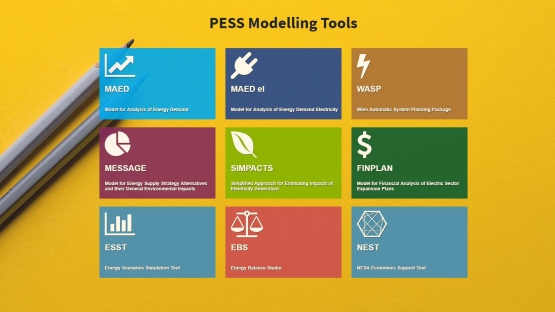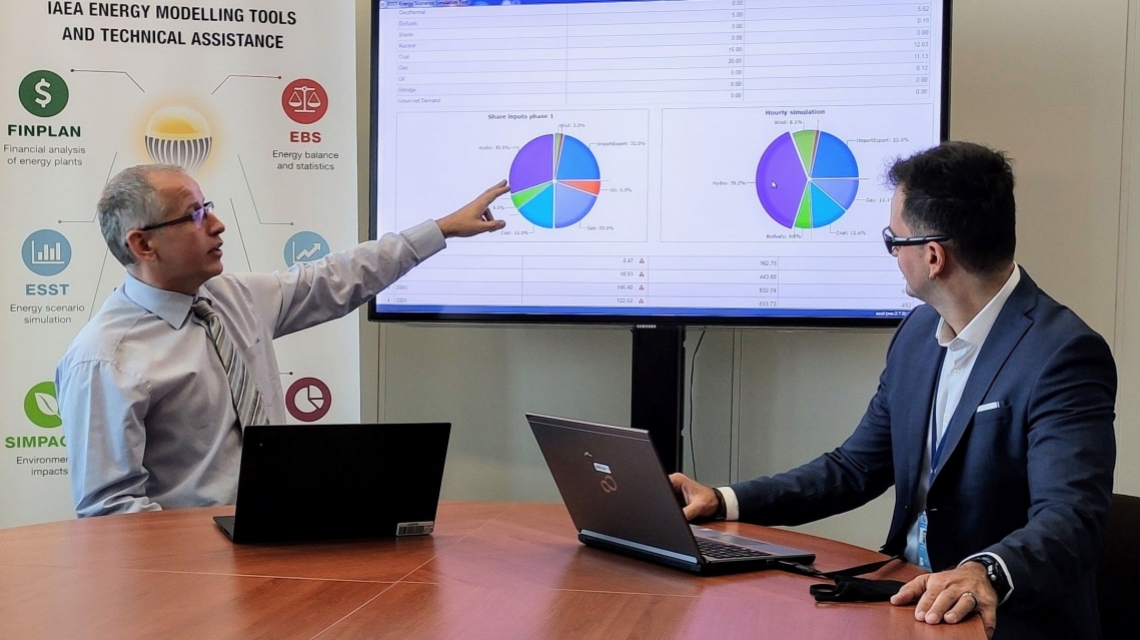Energy planning is an essential part in developing energy strategies that effectively address concerns over energy resource availability, climate change, air quality and energy security. Despite the Covid-19 pandemic, the IAEA continues to assist Member States in building and strengthening their capacities for energy system analysis and planning, through an emphasis on distance support and e-learning.
Computer-assisted modelling forms the core of the IAEA’s approach to energy system analysis and planning. This capacity building process is centred around a set of in-house energy planning tools which includes the IAEA’s Energy Scenarios Simulation Tool (ESST). Last August and September, the IAEA and Argonne National Laboratory of the United States of America conducted a joint virtual training on the Identification of Viable Sustainable Development Paths and the Use of ESST, with 17 participants from 10 countries taking part.
National economic and energy statistics provide inputs to the models to reflect the current energy system as well as its interaction with the principal drivers of energy demand and supply, such as demographics, economic development, technology change and environmental policy.
“Energy planning and related online training services provided by the IAEA allow continuous capacity building among national experts from Member States,” said Professor Zeljko Tomsic, from the Department of Energy and Power Systems at the University of Zagreb. “The IAEA’s training using tools like ESST offer users an intuitive framework for considering possible future energy demand and supply paths while easily understanding the effect of energy policies on overall energy mixes.”
National experts can use ESST to identify and compare policies and demonstrate benefits or challenges of energy sector development to decision makers. ESST allows users to estimate future energy balances in aggregated form and perform a screening of alternative scenarios in terms of power generation expansion, investments and emissions of carbon dioxide and other pollutants.
“Whether or not they are interested in nuclear power, energy planning is crucial for Member States to formulate science-based energy policies. The IAEA is committed to helping its Member States with practical solutions in the clean energy transition,” said Huang Wei, Director of the IAEA Division of Planning, Information and Knowledge Management.
The IAEA provides technical assistance to its Member States, especially developing countries, to improve their capabilities for performing integrated energy assessments and formulating long term strategies.
“This is why IAEA experts have helped and continue to assist Member States like Antigua and Barbuda – a country without interest in nuclear power – analyse long-term power supply options and assess the robustness of the country’s electricity system, with an increasing share of variable renewables sources like wind and solar,” added Huang Wei.
Decisions on energy demand and supply infrastructure need to involve all stakeholders, consider all possible energy supply and demand options, and should be consistent with sustainable development goals. The Agency’s tools and methodologies are being constantly enhanced and improved to keep them up to date according to new computational platforms, innovative capacity building practices, and the evolution of energy related technologies.
Todd Levin, Principal Energy Systems Engineer at Argonne National Laboratory and an instructor in the training, underlined the success of the event: “This speaks to both the functionality and usefulness of ESST as a tool that can help inform long-term energy system planning processes under a variety of different scenarios and I look forward to seeing its usage expand as the tool continues to evolve.”







